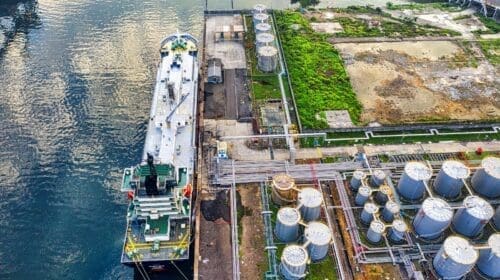As oil and natural gas production in the U.S. is on pace to set records in 2023, industry analysts are pointing out the industry overcame some significant obstacles, making the achievement even more noteworthy.
Crude oil production will break the previous record set in 2019 of 12.3 million barrels per day. Oil production has been increasing monthly this year, topping 13.6 million b/d in October, and will average about 13.2 for the entire year.
Natural gas is also on pace to set a production record exceeding 41 billion cubic feet per day (bcf/d), which would break the previous record of 39.1 bcf/d set last year.
World Oil magazine Editor-in-Chief Kurt Abraham recently pointed out some of the problems and inconsistencies the industry overcame.
The U.S. drilling rig count, which for many years has been considered a key factor in determining industry activity, declined in 2023. “…(T)he U.S. rig count has averaged just 690.1 for 50 weeks in 2023, down 4.6% from 2022’s average of 723.0, yet the country’s oil production has risen to 13.2 million b/d from the 2022 average of 11.9 million b/d. That’s a 10.9% increase,” Abraham stated.
Abraham also said the number of wells drilled in 2023 probably will be lower in 2022 despite a 19.75% increase in upstream spending.
“There may be a number of reasons for this, including operators’ and drilling contractors’ continued difficulties in hiring personnel, which limits any growth in projects,” he said. “Additional factors seem to include equipment and service prices that remain inflated, low natural gas prices, anti-oil-and-gas attitudes among some firms in the financial community (thus impacting funding), continued fiscal discipline among some operators, ever present uncertainty on the regulatory front, especially on the federal level, and some lingering supply chain issues,” Abraham stated.
The United Nations COP 28 conference concluded with some 190 nations agreeing to transition away from fossil fuels, possibly adding to anti-oil investments in the future.
Price volatility created problems, too. The war between Russia and Ukraine and the conflict in Israel created questions about the amount of oil that would be available, which impacts price. OPEC+ decided to decrease production by 1 million b/d.
The industry is still recovering from the pandemic in 2020, when oil prices briefly dropped to below $10 but recovered in the summer of 2022, reaching a high of $122 and dropping again, opening in 2023 at $74. Prices again rose to a high of $93 in September and down again to $68 in December, according to the Energy Information Administration.
Natural gas prices also have been volatile, going from $1.50 per British thermal unit (Btu) during the pandemic to a high of $9.375 in August 2022 to $3.988 in January 2023, down to $1.991 in March and closing the year at $2.619, according to EIA data. EIA attributes the recent swing in price to record-high production, flat consumption, and rising natural gas inventories.
Alex Mills is the former President of the Texas Alliance of Energy Producers.
Alex Mills is the former President of the Texas Alliance of Energy Producers. The Alliance is the largest state oil and gas associations in the nation with more than 3,000 members in 305 cities and 28 states.
Oil and gas operations are commonly found in remote locations far from company headquarters. Now, it's possible to monitor pump operations, collate and analyze seismic data, and track employees around the world from almost anywhere. Whether employees are in the office or in the field, the internet and related applications enable a greater multidirectional flow of information – and control – than ever before.







